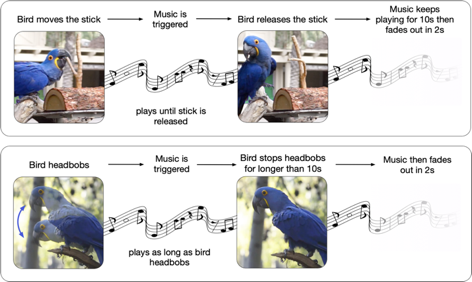
Animal-Human-AI Interaction Design Challenge
for Promoting Deeper Connection with Nature

Winners
Best Overall Award
MonkeyEye: Wild Primate Health and Wellbeing Monitoring
Brenda Scarleth Gutiérrez (Microsoft), Alejandro Luna (CHUBB), Ever Solís (CHUBB), Adrián Alemán-Zapata (Radboud University)
Track 1 Award: AI for Decoding Animal Communication
MooMoo MooMoo AI : Moodeng Monitoring and Output-Oriented Activity Intelligence Web-Based Platform
Track 2 Award: AI for Promoting Human-Animal Interaction & Appreciation
MeowGroup, Harvard University A Decoder of Cats’ Vocalizations
Track 3 Award: AI for Augmenting Zoo Keepers
Jnx03 (Chawabhon Netisingha) MooDong : multi-task LSTM and vision models to extract pose, mood, hunger, and future‐movement predictions—no manual labels required.
Honorable Award
ChangGPT_HLclip Elephant HL-CLIP: AI That Spots the Heart of Elephants
Honorable Award
CALKEE , Thammasat University CALKEE – AI-Driven Health Analysis Application for Rabbits
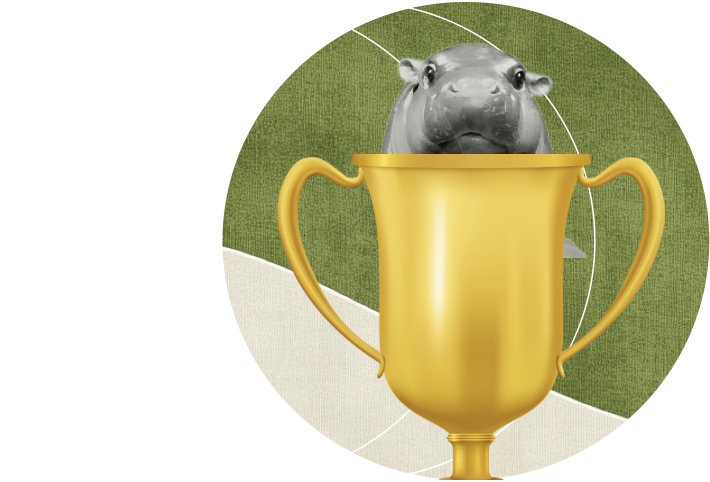
Award Ceremony & Symposium
“Ecological Intelligence”: A Symposium on AI for Human-Nature Flourishing
9 Jul 2025 | 13:00 – 17:45 at True Digital ParkR
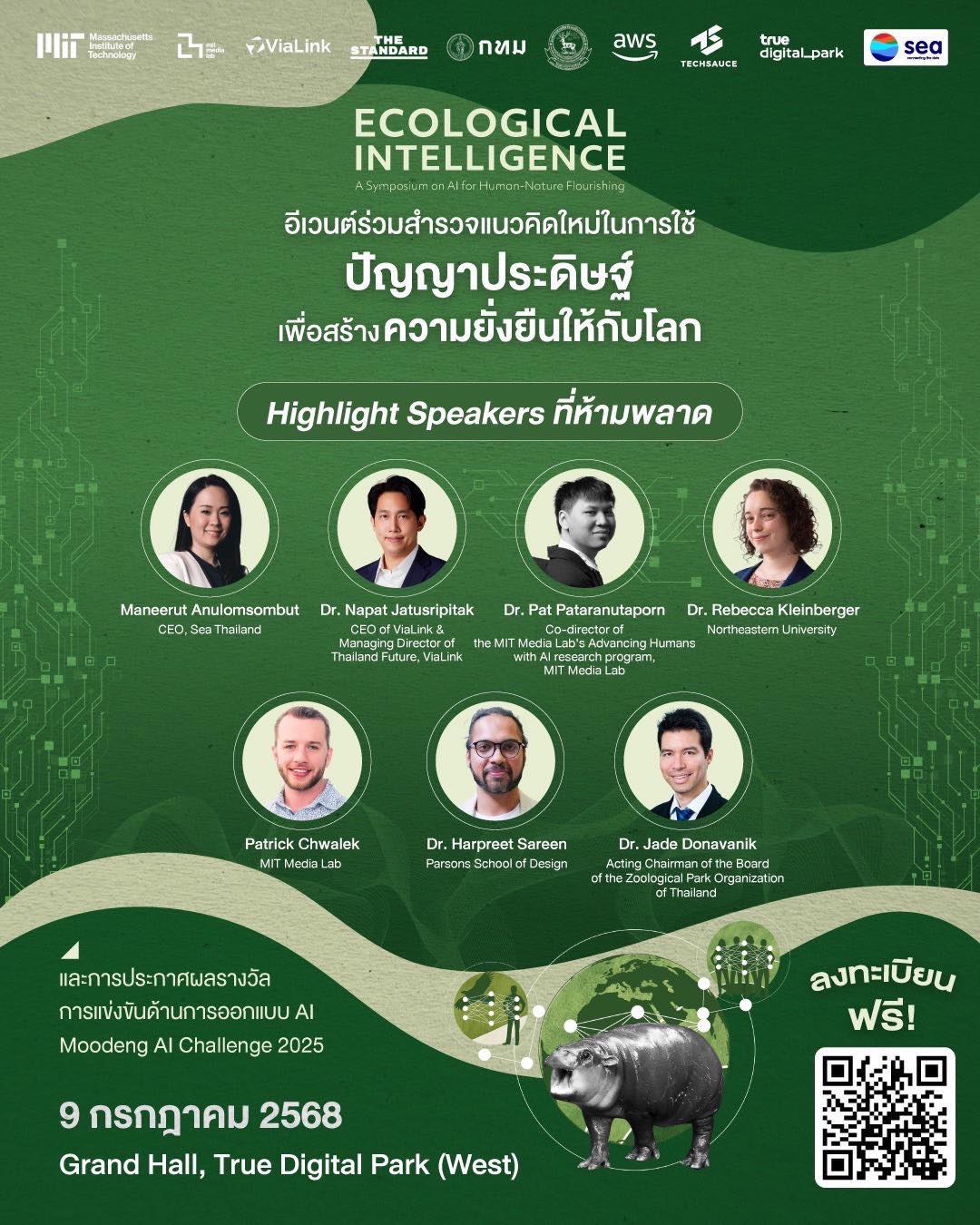
Bridging AI, Animals, and Human Connection
Moodeng, our beloved baby hippo, has captured hearts worldwide. Since her viral video swept across the globe, millions have flocked to see her, rejuvenating interest in zoos and natural conservation.
With the rapid evolution of AI technology, a unique opportunity emerges to harness its potential to foster deeper connections between humans, animals, and nature.
Inspired by Moodeng, this challenge invites innovative solutions that bring us closer to understanding animals like Moodeng while prioritizing sustainability and resource-conscious design.
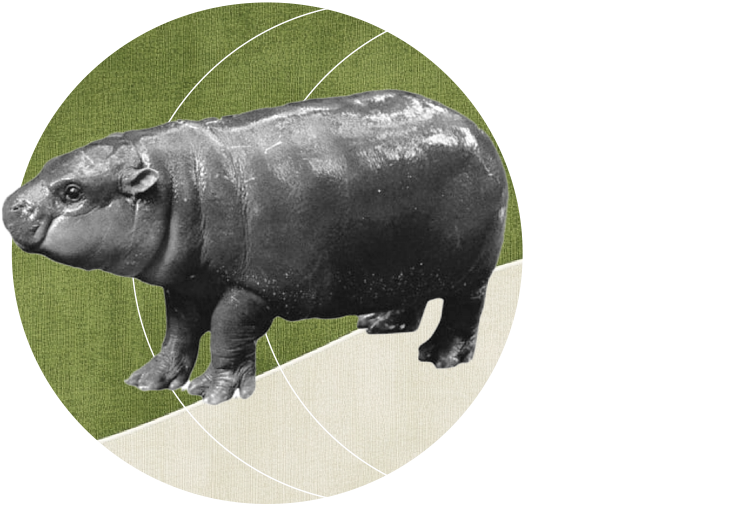

The AI Challenge Overview
We’re inviting the world’s brightest minds to develop AI solutions that could revolutionize our understanding of animal behavior and communication. Our challenge focuses on three transformative areas:

AI for Decoding Animal Communication
Developing multi-modal AI systems that can interpret and understand animal behaviors, vocalizations, and expressions starting with Moodeng.

AI for Promoting Human-Animal Interaction & Appreciation
Building innovative ways for humans to meaningfully interact with and learn from animals through technology.

Sustainable AI Solutions
Creating powerful AI tools that minimize environmental impact, proving that technological advancement and conservation can go hand in hand.
Challenge Objectives
- To leverage large multimodal AI systems and language models in decoding animal behavior and communication.
- To foster human-animal interactions that deepen the connection with nature, using Moodeng as a case study and input source.
- Advancing our understanding of animal intelligence could inspire alternative frameworks for artificial intelligence.
- To prioritize AI solutions that are resource-efficient, minimizing environmental impact without compromising on effectiveness.
- To prompt reflection on ethical and meaningful interactions with wildlife.

Challenge Tracks & Species
The Moodeng AI Challenge invites innovators to explore the intersection of AI and wildlife conservation through three distinct tracks, with an additional focus on sustainability. Through collaboration with the Zoological Park Organization of Thailand, participants can develop solutions focused on Moodeng (our beloved pygmy hippopotamus), elephants (addressing both intelligence and human-wildlife conflict), or their chosen species.
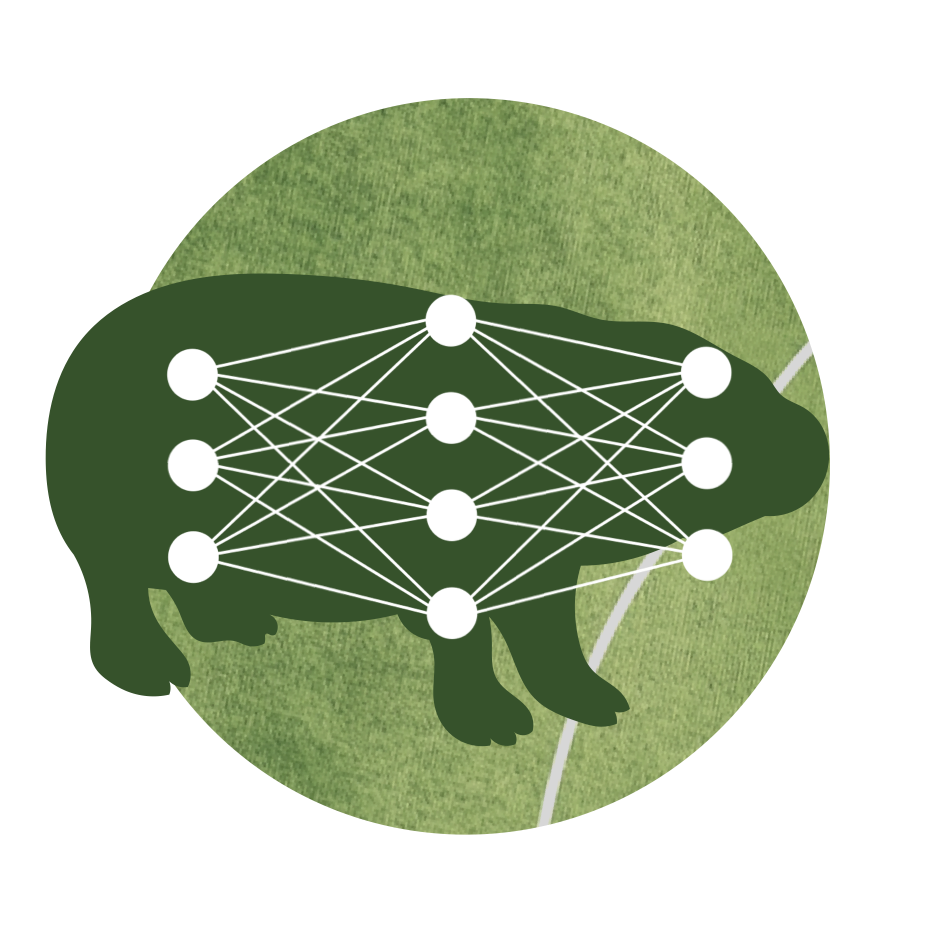
Track 1: AI for Decoding Animal Communication
This track challenges participants to develop AI systems capable of interpreting complex animal communication patterns and expressions.
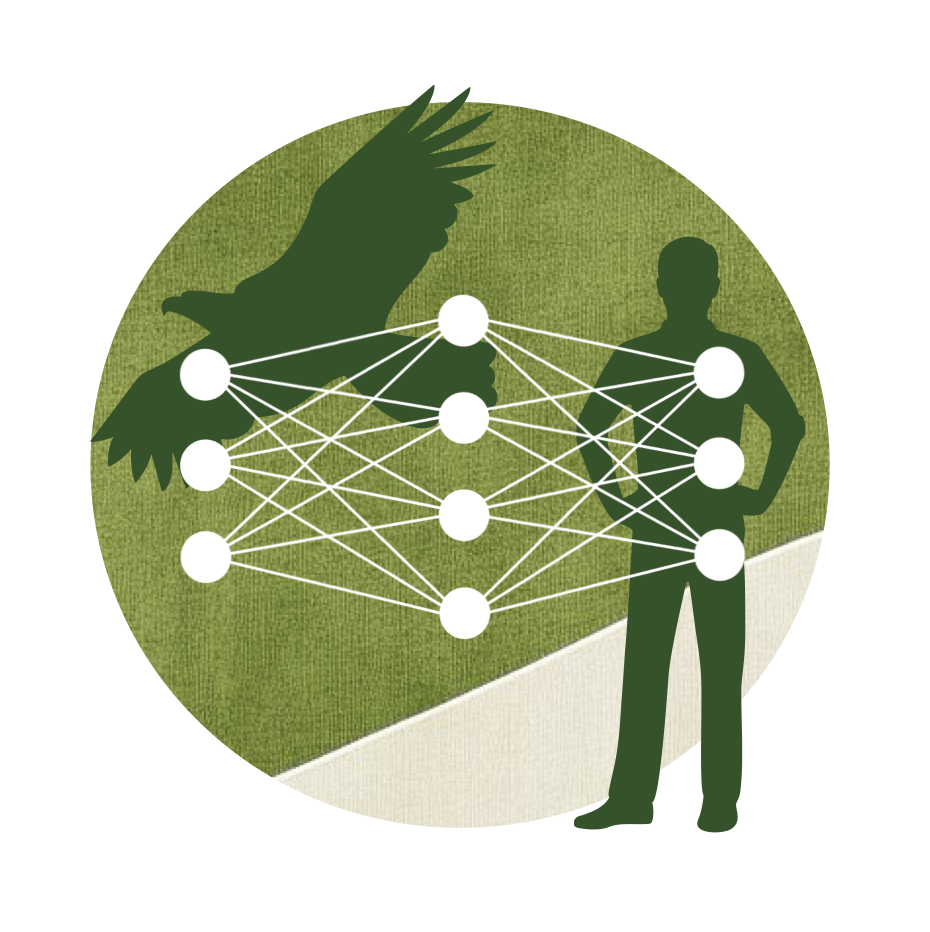
Track 2: AI for Promoting Human-Animal Interaction & Appreciation
This track focuses on creating innovative interfaces that facilitate meaningful connections between humans and animals.
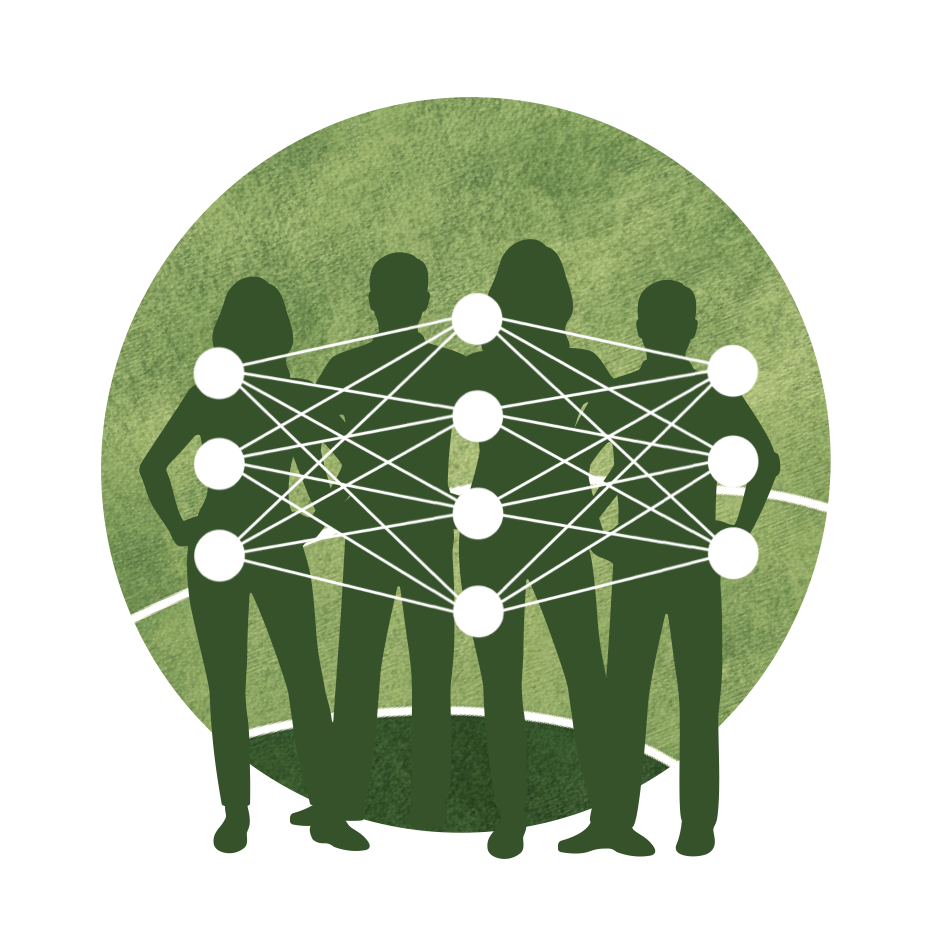
Track 3: AI for Augmenting Zoo Keepers
This track challenges participants to create thoughtful AI solutions that lift the administrative burden from zoo keepers and enable them to focus on animal care.
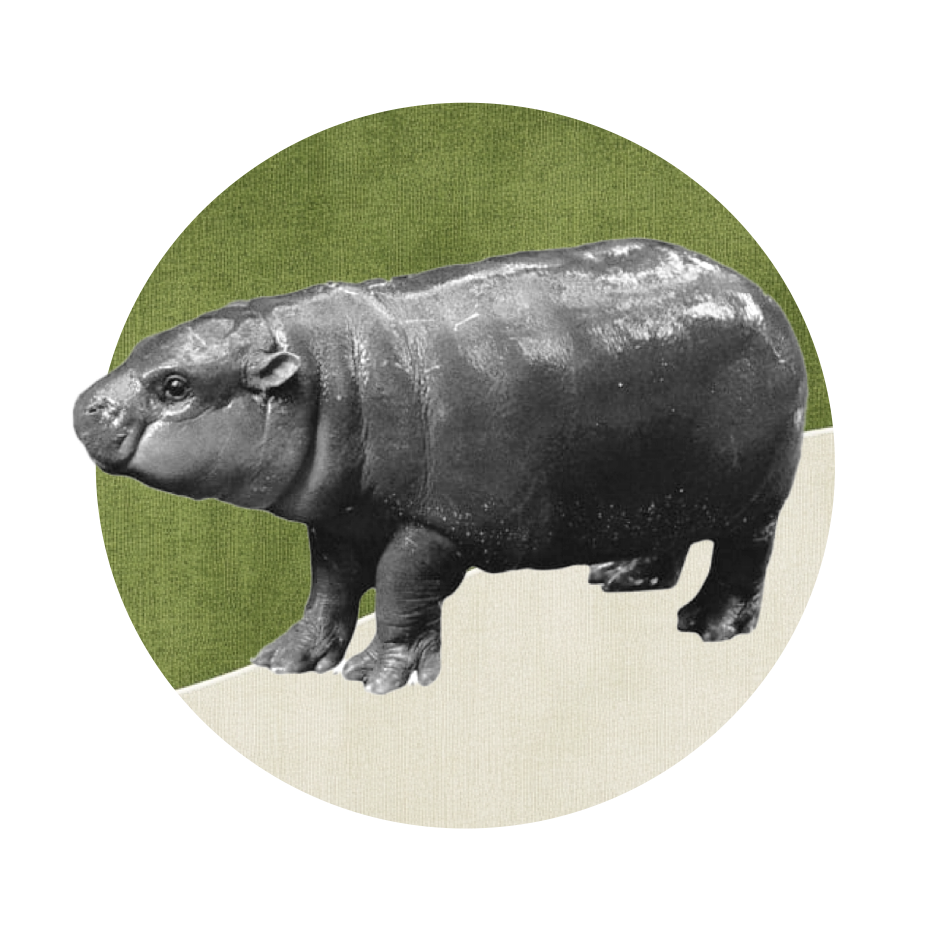
Moodeng (Pygmy Hippopotamus)
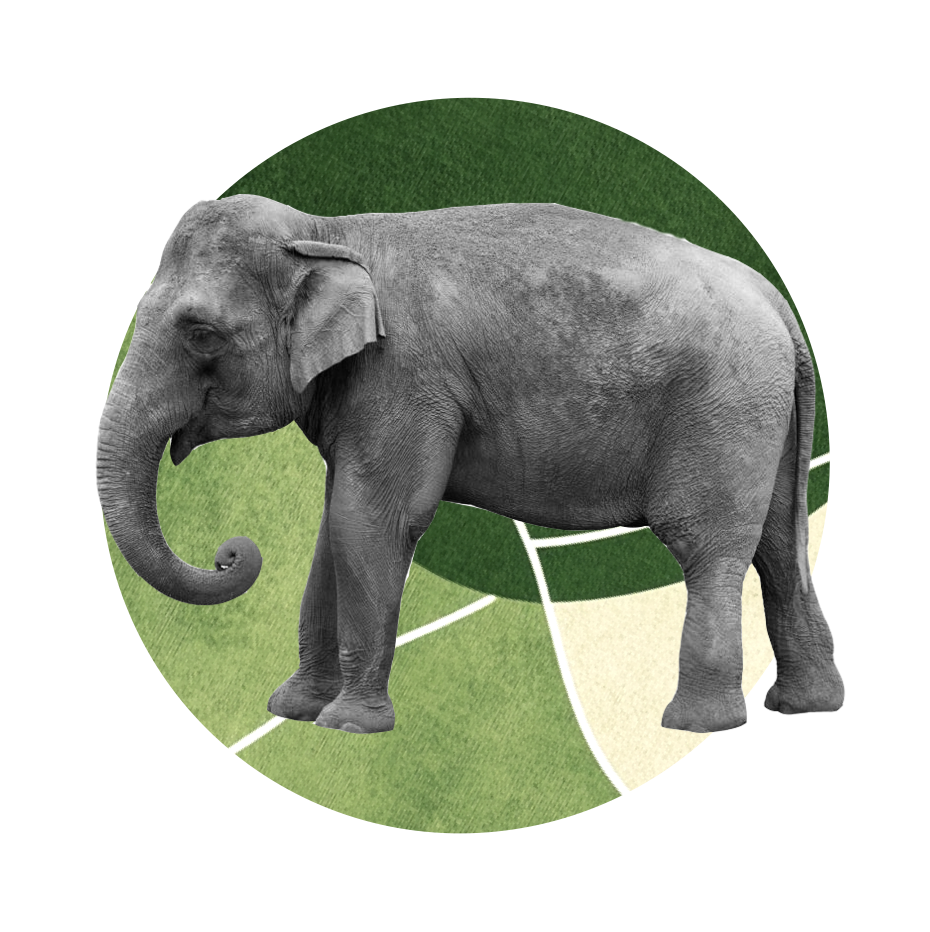
Elephant
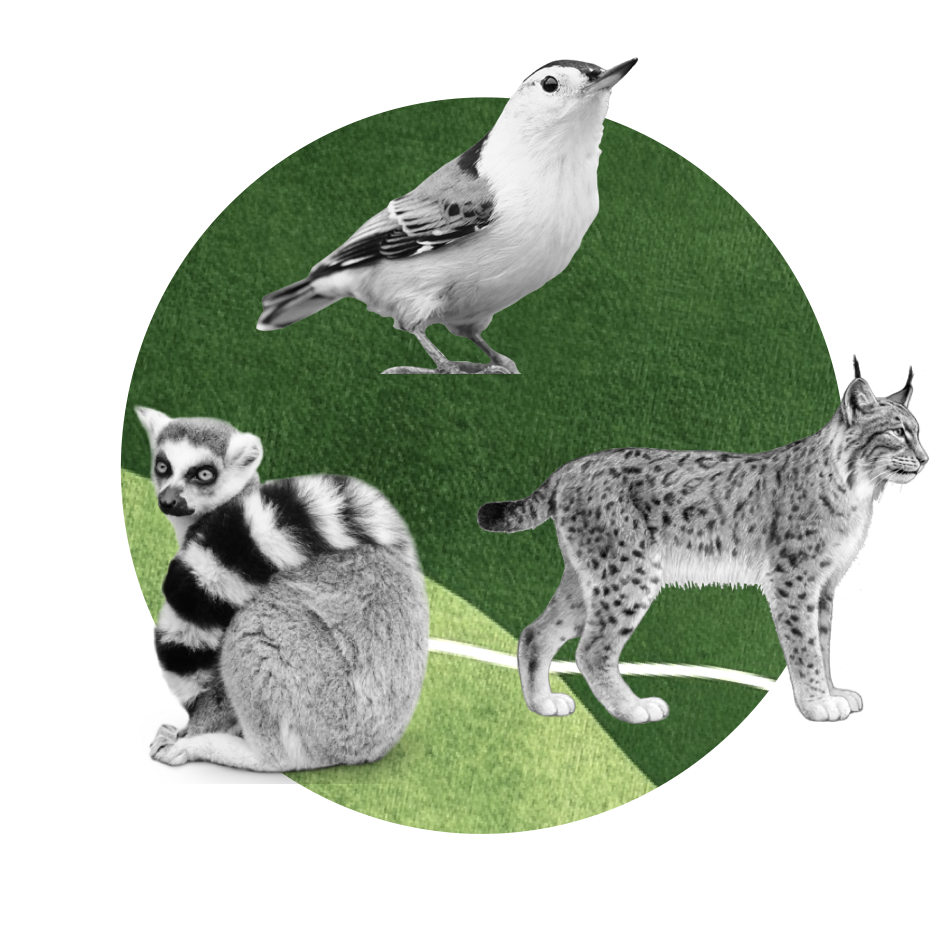
Open Species Selection
The challenge offers three focus species options: Moodeng, our globally beloved pygmy hippopotamus whose charismatic presence provides unique opportunities for public engagement; elephants, whose remarkable intelligence and complex social structures present both fascinating research opportunities and critical human-wildlife conflict challenges; or an open species selection that allows participants to explore other compelling wildlife conservation challenges. This multi-faceted approach aims to advance both our understanding of animal behavior and our ability to foster meaningful human-wildlife connections while promoting conservation efforts.
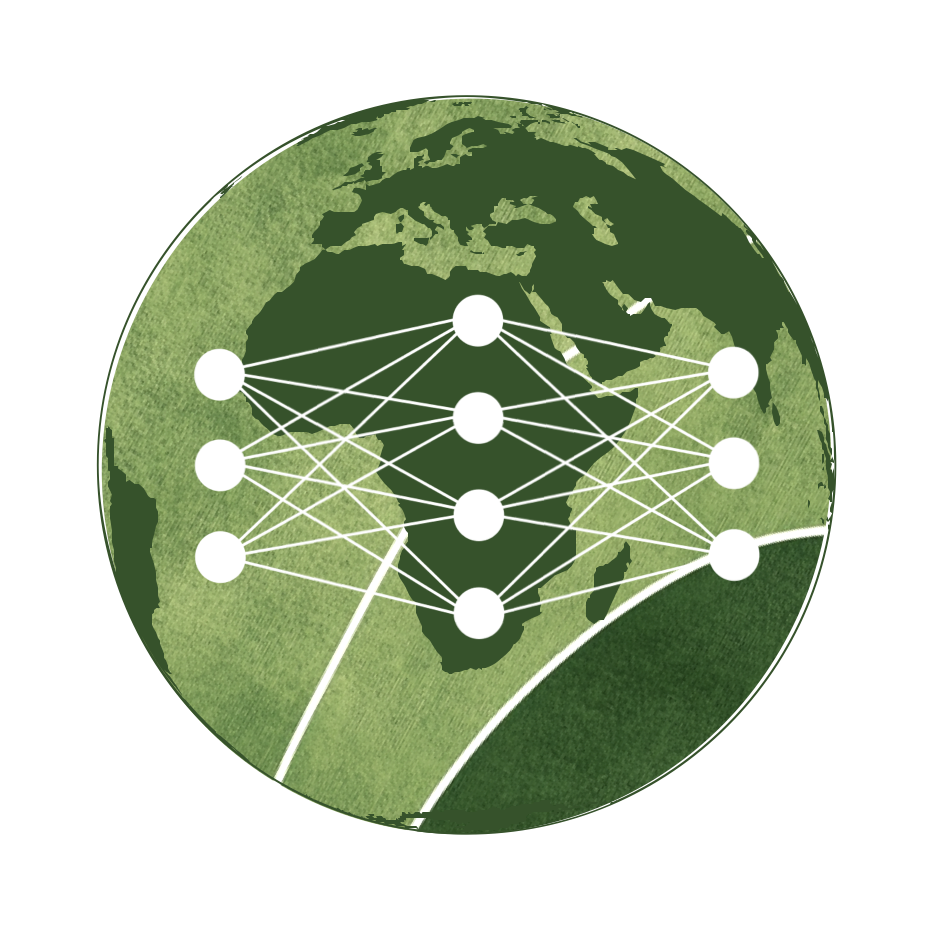
Bonus Track: Sustainable AI Solutions
Participants may address one or both tracks, while also considering sustainable AI practices in their solutions.
Track 1: AI for Decoding Animal Communication
How might we use multi-modal AI to decode and interpret animal communication, such as Moodeng’s behaviors, vocalizations, and expressions, using live-stream data as input? Can AI truly help translate what Moodeng “thinks”?
In this groundbreaking challenge track, participants will develop AI systems capable of decoding and interpreting complex animal communication patterns through multi-modal analysis. The primary focus is on creating systems that can process and analyze real-time data, particularly from Moodeng and other selected species, to understand their various forms of communication.
Recent breakthroughs in animal communication research have revealed increasingly sophisticated patterns in how animals communicate. From the discovery of name-like calls in African elephants to the identification of phonetic structures in sperm whale vocalizations, we now know that animal communication is far more complex than previously understood. This track challenges participants to build upon these discoveries using advanced AI techniques.
Participants must develop systems capable of processing multiple communication channels simultaneously. This includes analyzing visual cues such as body posture, facial expressions, and movement patterns; acoustic signals including vocalizations, infrasonic communications, and environmental interaction sounds; and behavioral patterns that might indicate emotional states or intentions. The challenge particularly emphasizes the importance of understanding communication in context, recognizing that animal expressions vary significantly based on environmental conditions, social situations, and individual histories.
Reference:
AI decodes the calls of the wild (Savage, 2024)
The sperm whale ‘phonetic alphabet’ revealed by AI (Latham & Bressanin, 2024)
African elephants address one another with individually specific name-like calls (Pardo et al., 2024)
Vocal labeling of others by nonhuman primates (Oren et al., 2024)
Contextual and combinatorial structure in sperm whale vocalisations (Sharma et al., 2024)Northern Elephant Seals Memorize the Rhythm and Timbre of Their Rivals’ Voices (Mathevon et al., 2017)
Track 2: AI for Promoting Human-Animal Interaction & Appreciation
How might such a system be leveraged to facilitate respectful human-animal interactions? Additionally, what AI interface would best enable this interaction, sparking deeper reflection and awareness of our relationship with nature?
This track challenges participants to create innovative AI systems that facilitate meaningful connections between humans and animals while ensuring respectful boundaries and promoting conservation awareness. The goal is to develop interfaces that not only interpret animal behavior but also help humans understand and appreciate the complexity of animal lives and their crucial role in our ecosystem.
Participants must design systems that serve as bridges between species, enabling humans to better understand and respect animal behavior while ensuring animal welfare. These systems should go beyond simple behavior translation to create engaging, educational experiences that foster emotional connections and conservation awareness.
For the Moodeng-focused track, participants should consider the unique opportunity presented by the global popularity of this charismatic species. The challenge is to leverage this attention to create deeper understanding of not just pygmy hippopotamuses, but the broader ecosystem they represent. Systems should help viewers of Moodeng’s livestream understand the significance of observed behaviors, the importance of habitat preservation, and the interconnected nature of species survival. The interface design should facilitate different levels of engagement, from casual observation to deeper scientific understanding. This might include real-time interpretation of Moodeng’s behaviors, educational content triggered by specific observed activities, or interactive elements that help viewers understand the challenges faced by pygmy hippopotamuses in the wild. The system should be capable of adapting its communication style based on the user’s level of expertise and interest, from children to conservation scientists.
Reference:
Perspectives in machine learning for wildlife conservation (Tuia et al., 2024)
AI voices dead species to raise awareness of biodiversity crisis (Sinha, 2024)
Joy Branch: Interspecies Interactions Mediated by Technology (Kleinberger et al., 2020)
The Panda Project: Bio-acoustic Deep-Learning based Panda Activity Tracking (Kleinberger et al., 2020)
Augmented incubator to maintain vocal interaction between bird parents and egg during artificial incubation (Kleinberger et al., 2021)
Soundyssey: Hybrid Enrichment System for Elephants in Managed Care (Yating et al., 2021)
Track 3: AI for Augmenting Zoo Keepers
How might we empower zoo keepers with AI companions that handle routine tasks, enabling them to focus on what matters most – building meaningful relationships with animals and providing exceptional care?
Behind every happy hippo like Moodeng is a dedicated team of zoo keepers who pour their hearts into providing the best possible care. These amazing individuals often juggle countless tasks – from careful health monitoring to detailed record-keeping – while trying to spend quality time understanding and bonding with their animal companions. Zoos around the world often also don’t have the resources to store, compute, and automate insights from video footage.
This track challenges participants to create thoughtful AI solutions that lift the administrative burden from our zoo keepers’ shoulders and enable them to do even better. Participants must design solutions that understand the delicate balance of a zoo keeper’s responsibilities. These systems should go beyond simple automation to create intelligent workflows that adapt to each keeper’s unique routine and each animal’s specific needs. The solutions should enhance the keeper’s ability to make informed decisions about animal care while streamlining the sharing of critical information across care teams. This might include automated behavior logging during enrichment activities, smart alerts for subtle changes in patterns, and efficient ways to share insights across the care team. The solution should also consider how to thoughtfully integrate community contributions, allowing keepers to leverage public engagement while maintaining professional standards of care.
Here are some possible pathways:
1. The Keeper’s Companion – This pathway focuses on creating an intuitive AI assistant that works alongside keepers throughout their day. The system should understand the natural flow of keeper activities, automatically documenting observations while allowing keepers to stay fully present with their animals.
2. Care & Connection Insights – This pathway emphasizes the development of intelligent systems that help keepers better understand and anticipate their animals’ needs. Solutions should surface meaningful patterns in behavioral and health data, enabling proactive care decisions that can be made with evidence and in a collaborative manner.
3. Community of Care – There are plenty of CCTV footage but not enough eyes. This pathway explores how to thoughtfully integrate public participation into professional animal care. Solutions should create structured ways for the internet community to contribute positively while ensuring that all information passes through appropriate professional validation.
Bonus Track: Sustainable AI Solutions
How might we design smaller, energy-efficient models that retain powerful capabilities? Can we create powerful AI tools that minimize environmental impact, proving that technological advancement and conservation can go hand in hand?
Participants in either Track 1, 2, or 3 are encouraged to incorporate sustainable AI practices into their solutions.
When developing solutions for either main track, participants are encouraged to consider the environmental impact of their AI systems and implement sustainable practices in their design. This additional focus challenges participants to push the boundaries of efficient AI design while maintaining powerful capabilities for their chosen track’s objectives. Solutions should strive to achieve high performance while significantly reducing computational resources and energy consumption. This consideration is particularly relevant in wildlife conservation contexts, where resources may be limited and minimizing environmental impact is crucial. Participants are encouraged to explore innovative approaches to model optimization, such as developing specialized architectures, implementing efficient processing of multi-modal data streams, and creating adaptive systems that can scale their resource usage based on current needs.
Moodeng (Pygmy Hippopotamus)
The pygmy hippopotamus, represented by the beloved Moodeng, presents a fascinating subject for AI innovation in wildlife conservation. As one of only 2,000-2,500 pygmy hippos remaining in the wild, Moodeng represents a critically important species whose behaviors and needs are still not fully understood. These solitary creatures possess unique adaptations for their semi-aquatic lifestyle and remarkable underwater capabilities.
Moodeng‘s global popularity through livestreaming offers an unprecedented opportunity to study pygmy hippo behavior in detail while engaging public interest in conservation. Their complex behavioral patterns – from underwater navigation to social interactions during rare encounters – present rich opportunities for AI analysis. Participants focusing on Moodeng can explore challenges such as detecting subtle mood changes, analyzing vocalizations both above and below water, and interpreting complex territorial behaviors.
The species’ shy nature and declining wild population make every insight valuable for conservation efforts. AI solutions focused on Moodeng can contribute to both scientific understanding and public education, potentially aiding conservation efforts for this vulnerable species.

Available Datasets & Models
- Moodeng Livestream Record: Continuous real-time footage capturing daily behaviors, social interactions, and environmental responses (Live steaming)
- Hippopotamus Labeled Image Dataset: Annotated collection of hippopotamus imagery for behavioral and physical analysis
- A Large Annotated Dataset for Animal Behavior Understanding: Comprehensive behavioral data spanning multiple species, including hippopotamuses
- Animal Pose Estimation
- Animal Action Recognition
- Animal Behavior Recognition Using Machine Learning
- Wildlife Tools
- Wildlife health via image classification
Elephant
Elephants represent one of the most compelling challenges in wildlife conservation and AI-assisted species understanding. These highly intelligent social mammals possess remarkable cognitive abilities, complex emotional lives, and sophisticated communication systems. Recent research has revealed their capacity for self-awareness, tool use, and even mathematical ability, making them ideal candidates for advanced AI analysis of animal cognition and behavior.
The elephant track presents dual challenges: deepening our understanding of their complex social structures and communication while addressing the critical issue of human-elephant conflict. With increasing habitat fragmentation, these conflicts have become more frequent and dangerous for both species. AI solutions must bridge the gap between scientific research and practical conservation, potentially developing early warning systems for conflict prevention, analyzing movement patterns to guide corridor planning, or decoding emotional states to predict behavior.

Available Datasets & Models
- Wild Elephant Dataset (Kaggle): Comprehensive collection of elephant behavioral data and imagery
- Elephant Sound Database: Extensive archive of elephant vocalizations and acoustic communications
- A Large Annotated Dataset for Animal Behavior Understanding: Multi-species behavioral data including detailed elephant observations
- Animal Pose Estimation
- Animal Action Recognition
- Animal Behavior Recognition Using Machine Learning
- Wildlife Tools
- Wildlife health via image classification
Open Species Selection

The open species track invites participants to explore the vast diversity of animal life and the unique challenges each species presents. This track is particularly suited for investigating understudied species, emerging conservation challenges, or novel applications of AI in wildlife research. Participants might choose to focus on marine mammals with their complex acoustic communications, migratory birds with their remarkable navigation abilities, or social insects with their emergent collective behaviors.
Available Datasets & Models
- A Large Annotated Dataset for Animal Behavior Understanding: Comprehensive multi-species behavioral data
- Animal Behavior Prediction Dataset: Standardized dataset for behavior analysis and prediction
- Wildlife Datasets on Systema Naturae: Extensive collection of species-specific data
- MammalNet:: Large-scale video benchmark for mammal recognition and behavior understanding
- Dog Behavior Analysis Dataset: Detailed behavioral data for domestic canines
- eBird Data: Extensive bird observation and behavior database
- Wildlife Insights: Global wildlife monitoring database
- Wildlife Dataset: Pipeline for wildlife re-identification including dataset zoo, training tools and trained models
- Project CET: Comprehensive whale research data
- Natural World Tasks: Diverse collection of wildlife-related datasets and challenges
Potential Ideas
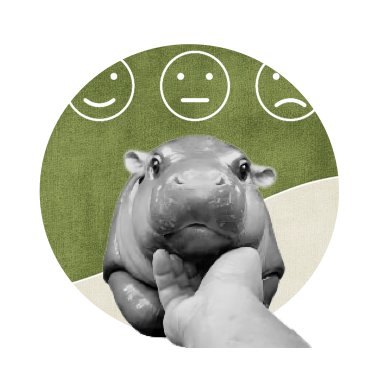
Moodeng Model for Animal Sentiment/Stress Analysis
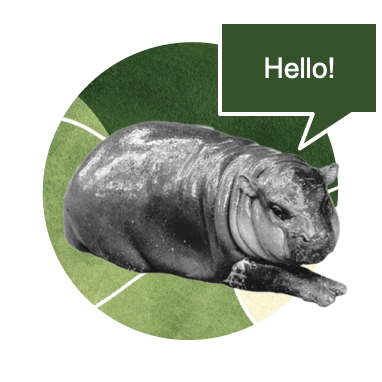
Hippo Chat: Large Hippo Model for Human-Hippo Communication
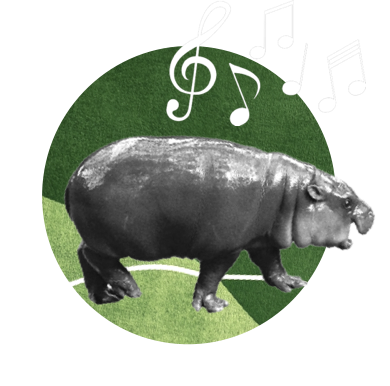
AI-powered Musical Instrument for Moodeng
Inspiration
Submission Requirements
All the projects must be open-source:
- AI Model/System Prototypes Submit models to the website along with the model card outlining the model’s structure, methodology, and intended use case.
- Video Demonstration: A short public-friendly video explaining the solution, its goals, and potential impact.
- Scientific Report: A document covering the project’s motivation, methodology, and evaluation results.
- AI Model Footprint on Environment: Provide documentation on energy use and sustainability efforts in the creation and deployment of the model.
The Moodeng AI Challenge welcomes a flexible approach to AI model selection. Participants may utilize existing open source models, commercial API services, or develop custom models. Regardless of the chosen model approach, participants should provide comprehensive documentation of their model architecture, including detailed descriptions of components, data flow, and processing pipelines.
Potential Models to Explore

Awards
Track 1 Award: AI for Decoding Animal Communication
Excellence in developing AI solutions for understanding animal communication patterns.
Track 2 Award: AI for Promoting Human-Animal Interaction & Appreciation
Excellence in creating technology that enhances human-animal connections and understanding.
Track 3 Award: AI for Augmenting Zoo Keepers
Excellence in developing tools to support animal care professionals.
Best Overall Award
For the most accurate and meaningful interpretation of Moodeng’s behavior.
Best Environmental Sustainability Award
For high-performance solutions demonstrating minimal environmental impact.
Prizes
Recognition from MIT and collaborators of the Moodeng AI Challenge
Grand Prize:
- $3,000 award for Best Overall Project
- Exclusive meeting with Moodeng on July 10, 2025
- Complimentary flight for one team representative (supported by ViaLink)
Track Winners (4):
Participation in the exclusive meeting with Moodeng
$500 award per track
Complimentary flight for one team representative per winning team (supported by ViaLink)
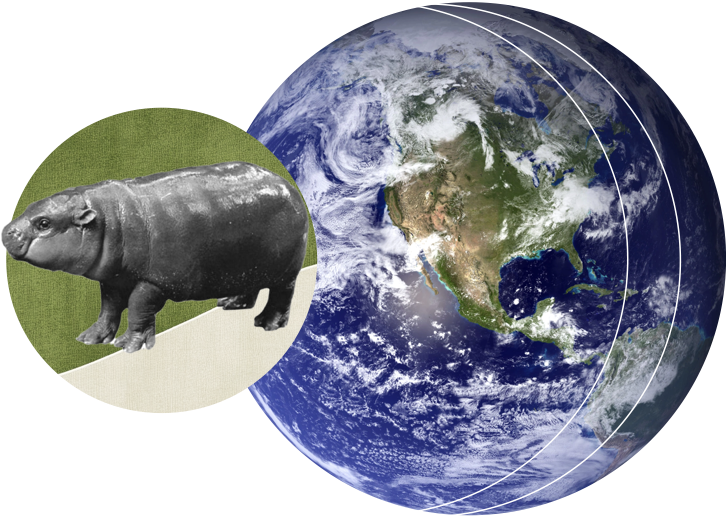
Judges
Pat Pataranutaporn, PhD
Co-director of MIT Advancing Human-AI Interaction Research Program (AHA)
Patrick Chwalek
Researcher at MIT Media Lab
Rebecca Kleinberger, PhD
Director of the INTERACT Animal Lab, Interdisciplinary with the College of Arts, Media and Design)
Napat Jatusripitak, PhD
Co-founder & CEO at ViaLink
Harpreet Sareen
Assistant Professor of Interaction and Media Design at Parsons School of Design
Jade Donavanik, PhD
Acting Chairman of the Board of the Zoological Park Organization of Thailand
Advisors
Nakarin Wanakijpaibul
Editor-in-Chief at the Standard
Pattie Maes, PhD
Professor at MIT Media Lab
Santitarn Sathirathai, PhD
Advisor on National Artificial Intelligence (AI) Strategy
Attapon Srihayrun
Director General of The Zoological Park Organization of Thailand
Molzaya Juntharaniyom
Subcommittee on Business, Communication and Digital Technology Development of The Zoological Park Organization of Thailand
Timelines
- Submission start: Jan 21, 2025
- Submission end: May 31, 2025
- Judging: June 1, 2025
- Announcement: June 15, 2025
- Public event: July 9, 2025
- Moodeng trip: July 10, 2025

Challenge Organizers
- Pat Pataranutaporn (MIT Media Lab)
- Napat Jatusripitak (Via Link)
- Pattarasuda Boonyasri (The Standard)
- Chayapatr Archiwaranguprok (MIT Media Lab)
- Attapon Srihayrun (The Zoological Park Organization of Thailand)
- Molzaya Juntharaniyom (The Zoological Park Organization of Thailand)



